Reading. copper accessories
Want to defeat the enemy must understand the enemy first, regarding the workshop scene management, the waste is probably the biggest enemy. Because of the waste, companies are unaware of the high cost of production. Because of the waste, the work that two people could accomplish would require five people. Because of waste, companies pay a lot of labor costs. Any activity that cannot create value is called waste. To eliminate the waste in the on-site management of the workshop, we must recognize these eight waste phenomena.
1. One of the eight wastages in the shop floor management: bad and rework waste
The so-called “bad” and “rework” waste refers to the time, manpower, and material resources required to dispose of the defective products in the garment factories, and the related losses caused thereby. copper accessories
Such waste includes: material loss, defective products becoming waste products; loss of equipment, personnel, and working hours; additional repairs, QC, and additional inspection losses; sometimes need to cut prices for garments, or cause factory reputation due to delay in shipping. Decline.
2. Eight wastes on the shop floor management: waste of processing
The waste of processing is also called excessive processing waste. It mainly includes two meanings: The first is the extra sewing and excessively precise processing. For example, excessive stitches cause substantial waste of resources; second, extra work time and assistance are required. Equipment, but also to increase the waste of energy such as the production of electricity, but also increased the man-hours of management.
3. Three wastes on the shop floor: waste of action
The waste of action exists in the production lines of many garment companies. The following are common types of action waste: the two hands are idle, one hand is idle, the operation is suddenly stopped, the operations are too large, the left and right hands are exchanged, the walking is too much, and the body is turned The angles are too large, and the shifting of “states”, unclear skills, stretching back movements, bending down movements, and repetitions and unnecessary movements during movement, etc., wastes these movements causing unnecessary consumption of time and stamina. copper accessories
4. Workshop waste management waste management four: the waste of handling
Handling is an action that does not generate added value, and work that does not generate value is waste. The waste of transportation is specifically represented by the waste of actions such as placement, accumulation, movement, and alignment. This results in the waste of space required for the movement of articles, waste of time, and occupation of human tools.
At present, many garment industry managers in China consider that handling is necessary and not wasteful. Therefore, many people turn a blind eye to carrying waste, let alone eliminate it. There are also some clothing companies that use conveyor belts or machine-handling methods to reduce manual handling. This approach is to spend a lot of money to reduce the worker’s physical exertion, and in fact does not rule out the waste of the transport itself. copper accessories
5. Five on-site management waste five: the waste of inventory
According to the management philosophy of the past, people think that although inventory is a bad thing, it is necessary. In fact, inventory is not necessary, and even inventory is the source of all evil.
For example, some garment companies have failed in the production line, resulting in downtime or stopping the line. However, due to inventory, they will not be out of stock. This will mask the problem of downtime and line failure caused by the failure, and delay the troubleshooting. If inventory is reduced, these problems can be completely exposed to the water level, and these wastes can be solved step by step.
6. Six on-site management of waste: six premature waste
Too much or too early to produce, and to use up production costs in advance, is not only not beneficial, but also hides the waste caused by waiting and loses the opportunity for continuous improvement. Some apparel companies have a relatively strong production capacity. In order not to waste production capacity without interrupting production, they increase the number of work-in-process, shorten the product cycle, increase the space, and increase the waste of handling and accumulation. copper accessories
In addition, manufacturing too much or too early will result in a huge inventory, increasing the burden of interest and inevitably increasing the risk of devaluation.
7. Workshop waste management waste management seven: waiting for waste
The waiting time for waste due to the interruption of the supply of raw materials for production, the unbalanced operation, and the improper arrangement of production schedules is called waiting waste. Switching between different styles on the clothing production line, if the preparation is not enough, is bound to cause the waste of waiting; daily workload changes too much, sometimes busy, sometimes causing people and equipment to be idle; the upstream process problems, leading to The downstream process has nothing to do. In addition, the existence of inequality in the production line, etc., is also an important cause of waiting for waste.
8. 8 On-site Waste Management Waste Management: Waste of Management
Waste management refers to the extra waste that management personnel take to take remedial measures after the problem occurs. Management waste is a problem that arises from the inadequacy of prior management. Scientific management should be fairly predictable, have reasonable planning, and strengthen management, control, and feedback as things advance, so that they can It reduces the occurrence of management waste.
Above, we have learned about the eight wastes that are common in the field management of workshops. This is just the first step to eliminate the waste of the “Long March”. Next, we need to identify where there are wastes in the process, and then use appropriate tools to eliminate the The specific waste of identification is finally the repeated implementation of the above steps to implement continuous improvement measures. copper accessories
Below, the metal processing Xiao Bian summarized the 10 rules of on-site management, and then share with you.
The site management is innumerable, but the basic elements are only three: people, things, places; the situation of the scene is ever-changing, boils down to only “two streams”: logistics and information flow; as a site manager – production supervisor, workshop director, team leader It is necessary to make detailed analysis and research on these three elements and two streams, to find problems, analyze causes, and find out the answers to the problems.
Simply put, the process flow is checked; the floor plan is adjusted upwards and downwards; the production line is counted; the action component is reduced by one point; the air pressure is a pressure when handling; the man-machine efficiency is mentioned; the key route is contracted; the site environment is reduced Change it; look at the visual management; find the source of the problem.
The purpose of this article is to provide field managers with an idea and tools for on-site management analysis and creation. With this in mind, it may be possible to use efficiency and efficiency in scientific management without spending a penny.
1. Check the process flow
The diagram depicting the steps and routing of a process is called a flowchart. It includes two major types of work processes such as garment sewing and process flow, but the essence is the same, and it can be used to illustrate the complex process with a graphical illustration. copper accessories
The process flow or work flow is the general route of a unit process or work. The image reflects the connection between the process or work process, departments and processes, the processing procedure after the determination or inspection, and the search of a garment company or a certain department. We should start with the process and analyze the entire process of the current production and work, which processes are unreasonable, which areas have flowed backwards, where there is a pause, and which process routes and links can be eliminated, merged, and simplified. Are all aspects of the analysis and judgment flow chart controlled? Does the test play a role in checking? Is horizontal linkage of various departments in place? Is it smooth? Do you need to build or add new pathways? From the various aspects of the flow chart and the delivery route, it is analyzed whether the existing work functions of various departments are in place. Is it necessary to adjust or reorganize existing organizations?
There is a way to “compose the box, diamond and line, but it is a treasure to use. If you have a complicated process, don’t think about running it clearly! If you add one plus, it will be more secure; if you pass through, the department’s functions will not be defeated. In order to improve the efficiency, we must be certain, and we should not quarrel over our rules!” copper accessories
2. Planned tone up
Some garment factories did not elaborately design the site layout and equipment layout at the initial stage of plant construction, or due to the continuous development of production, the continuous purchase of equipment, disrupted the layout, or caused a change in the product structure, resulting in the plant or The unreasonable layout of the equipment makes the product and the workpiece have too long transportation routes at the time of production. This is the hidden danger of manufacturing waste at every moment and must be determined to change.
In the process flow chart, we can’t see the plane route. An arrow on the flow chart may actually take tens of meters. Therefore, we must further find the benefit on the floor plan.
By analyzing the operation method and equipment configuration, according to the flow direction of the production process, whether there are duplicate routes and reverse flow conditions, identify irrational parts, reasonably adjust and design a new layout, to shorten the process route and the operator’s walking Distance, reducing unnecessary waste of resources.
Sometimes the movement of a piece of equipment can bring savings of tens of meters or even hundreds of meters. Sometimes it saves more space. copper accessories
3. Calculate on the pipeline
The production line and assembly line should be conducted in accordance with the same beat, and production can be balanced. Some enterprise productions often appear to be “front-to-back, back-to-back, front-to-front, and back-to-back.” One of the causes is the unreasonable movement method, and the other is that the beat is not balanced.
A wooden barrel that is bounded by many wooden boards of different lengths determines its size is not the longest one, but the shortest one. Similarly, on the assembly line, the slowest person is the one who decides the final efficiency of the assembly line. The balance efficiency of the production line or assembly line = the sum of the net working time of each process / the operating time of the longest process x the number of people. The balance rate of many production lines is often less than 50%. If the time-consuming processes are simplified, speed-up, substitution, or splitting methods are used, the time-shortening processes can be used to balance the line by cutting and adding. The production efficiency of the entire production line will be greatly improved, and the labor and accumulation caused by the slowness of individual processes will be eliminated.
4. The action element minus one minus
Any operation is based on manual actions, especially in labor-intensive companies such as garment factories, assembly processes, and processing operations, which are manual labor-based processes. Actions are a very important factor in generating benefits. copper accessories
The main purpose of performing motion analysis is to eliminate unnecessary movements, invalid actions or slow motions, such as bending over, carrying on work, unsmooth workplaces, lack of suitable tools, people and things in search of status, and so on. The method achieves maximum work efficiency.
This research can greatly increase production efficiency without spending a penny. For example, in real life, why do some people make dumplings faster than the average person? Why do some people transplant more quickly than the average person? That’s because they have a certain amount of know-how to accomplish their tasks with the most economical actions.
Try to use dumplings as an example. Many people will use more than eight actions or even dozens of actions to pack one dumpling. If you don’t put the spoon on the right thumb, use the following procedure to make dumplings: The right hand digging stuffing into the skin – hands together make dumplings forming – left hand dumplings. In this way, as long as 4 actions can wrap dumplings, the efficiency is double that of the average person! copper accessories
5. Air pressure at the time of transportation
According to statistics, 25% to 40% of the processing fee is the transportation fee; 70% to 80% of the processing time is the time of transportation and suspension; 85% of the disasters in the factory occur during the transportation process. It can be seen that the compression of the transport is very important. To improve handling, we must optimize handling and improve the number of handling, handling space, and handling time.
First, it is necessary to reduce the number of transports and the number of transports;
Second, in the handling space, it is necessary to shorten the transport distance, reduce the number of transport routes and times as much as possible;
Third, in terms of handling time, it is necessary to shorten the time and reduce the number of times; in terms of methods, it is necessary to pay attention to management coordination and try to use non-power such as using gravity to slide on a slope or carry it on a conveyor belt. copper accessories
The principle of rationalization of transportation is to ensure that the material being transported is almost loss-free; the method of transportation must be scientific and civilized, and brute force should be eliminated; the environment must be handled safely, appropriately, and risk-taking avoided; In place; a reasonable layout of the factory can effectively shorten the transport distance. When the factory planning has been fixed, the transportation distance can also be effectively shortened by rationalizing the planning process.
6. Man-machine efficiency mention
People and equipment are a pair of contradictions. If they are not dealt with properly, people who are not people or other machines or machines will happen. People and equipment constitute the relationship between ergonomics. During the analysis, it is necessary to analyze the working conditions of the operator and the machine at the same time, whether there is time for work, waiting, and invalidation, and to improve man-machine cooperation by adjusting the work order so as to seek reasonable In this way, people’s operations are coordinated with the operation of the machine, minimizing waiting time and maximizing the efficiency of people and machines. It’s like squeezing out the time waiting for each other, which is the benefit of joint operations with man-machine. copper accessories
7. The key route shrinks
Almost any product is made up of several parts, usually divided into several lines or several processes, and parts must be assembled at a later stage. In the process of forming parts and components, it will inevitably happen. The workload varies in each process.
This will result in mutual constraints in later production. There will be a lot of idle time for the small workload, and the heavy workload will not have a moment of rest. In other words, the time difference is zero and it becomes production. On the bottleneck. The process with zero time difference is called critical route. It restricts the production capacity and delivery time of the garment factory or workshop. After we find out the key route, we must use non-critical routes to mobilize people’s property, strengthen critical routes, or adopt parallel operations. , cross-operations and other forms, shorten the key line, constantly modify and optimize the plan, to achieve the best goal of reducing the schedule to save costs.
The basic function of the production supervisor is to be able to calculate and find the critical route according to the plan and production capacity. The second is to continue to compress key routes and other routes to achieve comprehensive optimization of time and cost. Here are two ways: copper accessories
The first method, time optimization. It is in the conditions of guaranteed manpower, equipment, and funds to seek the shortest working cycle. It can fight for time and quickly realize the effect of investment. Utilizing time difference, some personnel and material resources are drawn from non-critical routes to focus on key routes, or to decompose operations, increase the degree of parallelism between jobs, increase the input of manpower and equipment, and adopt new processes and new technologies to shorten the critical route. Duration of time; copper accessories
The second method, time-cost optimization. Expenditure for engineering projects can be divided into direct costs and indirect costs. Direct costs refer to those directly related to various operations such as fabrics or accessories. Indirect costs refer to administrative expenses that are not directly related to various activities, but change with time. The shorter the project cycle, the greater the indirect costs. small. Time-to-cost optimization seeks a project cycle when the sum of direct and indirect costs is the lowest.
8. Changes in the environment of the place
Analyze whether the production and work environment meet the production, work needs, and human physiological needs. Analyze the lack of goods and media on the site. According to the problems of different types of sites, put forward suggestions for improvement, and carry out “finishing, rectification, cleaning, cleaning, and literacy. “Safety,” six activities, to always maintain A status, continue to improve the B status, at any time to clear the C status, so that employees maintain a strong fighting spirit and good skills, the desired items readily available, no need to remove the matter at any time, on-site The environment is smooth, tidy, landscaping, safe, and civilized, so that the site and the environment are optimized in time and space. copper accessories
9. Visual management to see
The human brain has up to 80% of information from the visual aspect. Therefore, using visual communication and commanding methods is more straightforward. The use of visually pleasing, visually appropriate colors for visually perceptible information to organize on-site production, using charts, drawings, photographs, textual annotations, logos, symbols, as a tool for visual management. Can easily achieve the functions of explanation, recognition, warning, judgment, and action. Therefore, visual management can also be called “visible management” and “visual management.”
10. Find out the source of the problem
To find gaps daily in order to do a better job the next day – this is a very important point in the originality of the Haier model, constantly looking for problems, analyzing problems, and constantly improving the site, which is quality improvement, 8D The commonality of activities such as work law and CIP. It is this point that drives the management process and puts the company in a virtuous circle that is constantly improving. copper accessories
These ten rules of on-site improvement, if you really use it, you will find that these weapons are extraordinary and invincible. You will be pleasantly surprised to see that the process route is smooth, the layout is reasonable, and the linework disappears. In addition, the beat is more uniform, the worker’s operating efficiency is high, the handling is convenient, the production is balanced, the human-machine integration is close, the management is simple, and a faster, better, shorter, smoother, and cooler lean production situation Has come quietly! copper accessories
CNC Machining Service & CNC Machining parts
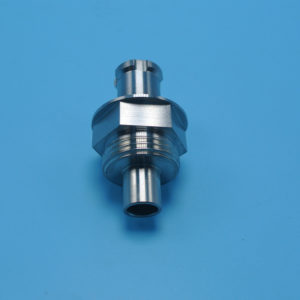
A6061 aluminum components for Medical Equipment
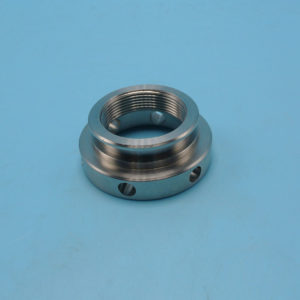
High Quality high volume machining China Manufacturer
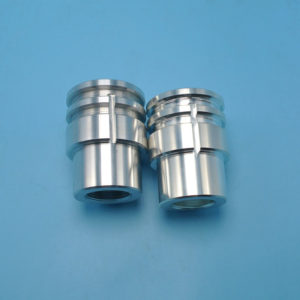
SGS Approved large machining companies Manufacturer
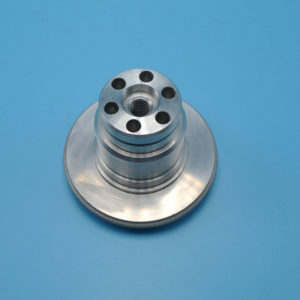
Professional Manufacturer of edm cutting services
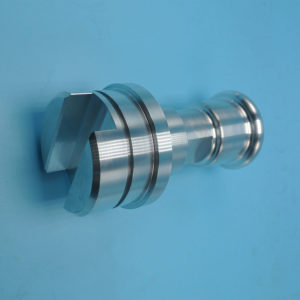
Competitive CNC machine services near me China Manufacturer
